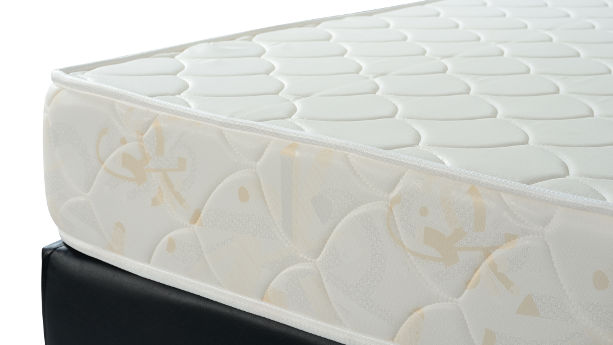
Mattresses imported and manufactured in the European Union are subject to various regulations that concern flammability, chemicals, biocides, and other aspects.
In this guide, we explain how regulations such as the General Product Safety Regulation (GPSR), REACH, and the EU Ecolabel Regulation relate to mattresses for sale in the EU. In addition, the guide also covers standards and testing requirements.
Content Overview

FREE CONSULTATION CALL (US, EU & UK)
- Request a free 30-minute call with Ivan Malloci to learn how we can help you with:
- Find product requirements
- Certification and labeling
- Lab testing
General Product Safety Regulation (GPSR)
The General Product Safety Regulation (GPSR) aims at ensuring that products sold in the EU are safe for consumers. The regulation covers consumer products in general, including mattresses, which can be dangerous because they may catch fire or contain dangerous substances.
The GPSR covers the following areas:
- Labelling (e.g. traceability, age suitability, warnings)
- Documentation (e.g. user instructions, test reports)
- Lab testing
In practice, ensuring compliance requires that you ensure compliance relevant product standards, which can be both harmonised and not harmonised.
EN 16890 – Children’s furniture – Mattresses for cots and cribs – Safety requirements and test methods
This standard, which is harmonised under the GPSR, sets safety requirements and methods for testing mattresses. This includes mattress bases and toppers that are used in domestic and non-domestic products such as:
- Children’s cots
- Travel cots
- Cribs
- Suspended baby beds
The standard does not apply to:
- Mattresses for carry cots
- Mattresses for pram bodies
- Inflatable mattresses
- Water mattresses
- Mattresses used for medical reasons
Other European mattress standards
We only found one harmonised standards for mattresses, which is EN 16890. In the case where no harmonised standard exists for your product, you should still comply with non-harmonised standards to ensure product safety.
Here we list examples of flammability and physical safety standards for mattresses that we found on the CENELEC database.
EN 597-1: Mattresses and upholstered bed bases – Ignition source smouldering cigarette
This standard covers mattresses and mattress pads. It specifies a method to test the ignitability of those products when they are affected by an ignition source, namely a smouldering cigarette.
EN 597-2: Mattresses and upholstered bed bases – Ignition source match flame equivalent
EN 597-2 covers mattresses; its specified test method includes subjecting that product to a gas flame as a source of ignition.
EN 1725 – Furniture – Beds – Requirements for safety, strength and durability
This standard covers beds, and their components, including mattresses and mattress pads. Its methods of testing include:
- Using weights that approximate a 110 kg person
- Tests for finger entrapment
- Durability tests for electrically operated beds
Documentation
The General Product Safety Regulation requires you to provide several documents, including those listed in the table below.
| Required documentation | Description |
| Technical documentation | The technical documentation must contain:
|
| User instructions | Manufacturers must provide user instructions that are clearly-written and in the language of the EU Member State where the mattress is to be sold |
| Test reports | Manufacturers must also provide reports that indicate the outcome of tests performed on their products. |
Labelling requirements
You must provide labelling information on your products, packaging, and document accompanying your product, such as the following:
- Traceability information (e.g. serial number, manufacturer name and address)
- Warnings (if applicable)
- Age suitability for children’s products (e.g. for children’s mattresses)
REACH Regulation
The REACH Regulation restricts hazardous substances and mixtures, including when used in articles. For clarification, articles in this context also includes mattresses.
Restricted substances
REACH’s Annex XVII lists hazardous substances that are either prohibited or have usage restrictions in consumer products. Some restrictions vary depending on the product.
For example, mattresses could contain one or more of the following restricted substances:
a. Azocolourants and azodyes (restricted to 30 mg/kg in bedding articles)
b. Tris(aziridinyl)phosphinoxide (prohibited in textile articles, including linen)
c. Polybromobiphenyls; Polybrominatedbiphenyls (PBB) (prohibited in textile articles, including linen)
Substances of Very High Concern (SVHC)
Substance of Very High Concern are substances that negatively and seriously affect the environment and human health, and are listed on the SVHC Candidate List.
If your product contains an SVHC that exceeds the 0.1% w/w limit, you must notify ECHA through the SCIP database and inform consumers about this, when requested.
Here are some examples of SVHC that could be found in mattresses:
- Diisopentyl phthalate (DIPP) – 0.3% w/w
- Benzyl butyl phthalate (BBP) – 0.3% w/w
- Bis(2-ethylhexyl) phthalate (DEHP) – 0.3% w/w
- Dibutyl phthalate (DBP) – 0.3% w/w
EU Ecolabel Regulation – Commission Decision 2014/391/EU
The EU Ecolabel is a voluntary labelling scheme that importers and manufacturers can use to indicate that their product meets specific environmental standards and requirements. It applies to may product categories, including mattresses. If you comply with the requirements, you can then affix the EU Ecolabel on your products.
While the main regulation (EC) No 66/2010 sets general requirements, Commission Decision 2014/391/EU establishes the ecological criteria for awarding the EU Ecolabel for bed mattresses.
Criteria
Annex of Commission Decision 2014/391/EU lists several criteria for awarding the EU Ecolabel for bed mattresses. Here we provide some examples:
a. Latex foam – If the mattress contains more than 5% of latex foam, the foam must not contain a concentration of more than 0.5 ppm of arsenic.
b. Wire and springs – The surface of springs must not be covered with a galvanic metallic layer.
c. Textiles – If the mattress cover contains alkylphenols, such as Octylphenol (27193-28-8), the limit value for such substances is 25 mg/kg.
d. Flame retardants – Mattresses should not contain intentionally-added flame retardants, such as decabromodiphenlyether (decaBDE) or polybrominated biphenyls (PBB).
e. Plasticisers – Mattresses should not contain intentionally-added plasticisers, such as di-iso-nonylphtalate (DINP) or dibutylphthalate (DBP).
Labeling requirements
In general, you should put the EU Ecolabel logo and licence number on a tag sewn onto the product, as well as on the product’s packaging and packaging material.
According to “The Official European label for Greener Products” fact sheet for bed mattresses, products can carry an optional label, which, if used, should bear a text box containing the text:
- “High quality long-lasting product”
- “Hazardous substances restricted”
- “Indoor air pollution reduced”
The EU Ecolabel Logo Guidelines go into more detail regarding the design, placements, and languages of the optional logo.
Lab Testing
You generally need to have your products tested to ensure compliance with relevant regulations and standards. Once your products pass the test, you obtain a test report, which can be used as a proof that the product is compliant with a given requirement.
In the table below we provide some examples of tests that concern the regulations mentioned in this article.
| Regulation | Lab testing |
| General Product Safety Regulation | Mattresses and beds generally need to undergo flammability and stability testing such as:
a. Ignition source smouldering cigarette b. Ignition source match flame equivalent c. Safety, strength and durability testing |
| REACH Regulation | Mattresses may contain substances that are either on the Annex XVII List, or the SVHC List, or both. As such, you should have your product tested to ensure that restricted substances do not exceed permitted levels. Here are some examples of these substances:
|
| EU Ecolabel Regulation (for bed mattresses) | Commission Decision 2014/391/EU identifies several standards and test methods for mattresses. This includes the following:
a. ISO 13937-2 (for tear strength of woven fabrics) b. ISO 9073-4 (for tear strength of nonwoven fabrics) c. ISO 13936-2 (for seam slippage of woven fabrics) d. ISO 13934-1 (for tensile strength of woven fabrics) e. EN 1957 (for durability) |
Mattress testing companies
Here are several companies that offer to test mattresses against EU regulations and standards:
- Intertek
- QIMA
- Bureau Veritas
- TÜV Rheinland
- Eurofins
Additional Requirements
We list here two other regulations that are relevant to mattresses.
| Regulation | Description |
| Biocidal Products Regulation | The Biocidal Products Regulation is relevant if you use biocidal substances in your mattresses, because those substances must be authorised before they can be used on articles. |
| Persistent Organic Pollutant Regulation | The Persistent Organic Pollutants Regulation restricts the use of persistent organic pollutants in consumer products, including mattresses. |
Recommended articles
















 Create compliance checklists for your product (US, EU & UK)
Create compliance checklists for your product (US, EU & UK) 20+ product certificate templates
20+ product certificate templates Create label files
Create label files Book product testing
Book product testing
how do you certify a method of cleaning for the mattress, we have a process that sanitiers which is chemically free.